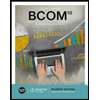IHP 620 9-1 Final Paper Submission Policy Research and Organizational Analysis
.docx
keyboard_arrow_up
School
Southern New Hampshire University *
*We aren’t endorsed by this school
Course
620
Subject
Business
Date
May 2, 2024
Type
docx
Pages
34
Uploaded by belkisa05 on coursehero.com
1
Policy Research & Organizational Analysis Report
Southern New Hampshire University
Belkisa Alic
IHP 620
April 28, 2024
2
Policy Research & Organizational Analysis Report Introduction This paper aims to conduct a policy analysis focusing on the importance of the Children's
Health Insurance Program (CHIP) to Lurie Children's Hospital and the broader availability of healthcare. The report examines how CHIP policies impact the program's effectiveness and the organization's ability to provide comprehensive healthcare services to needy children. The scope of the analysis includes evaluating CHIP policies and their implications for Lurie Children's Hospital, assessing the program's alignment with the hospital's mission and objectives, and exploring the significance of CHIP in improving access to healthcare for children and families served by the hospital. Furthermore, the report will highlight the importance of policy analysis in understanding the challenges and opportunities associated with CHIP implementation, identifying areas for improvement, and advocating for policies that support the program's goals and objectives. By conducting policy analysis, this report aims to provide insights into how CHIP policies impact the program and Lurie Children's Hospital, ultimately contributing to informed decision-making, strategic planning, and advocacy efforts to improve healthcare access and outcomes for children in the community. This paper analyzes Lurie Children's Hospital, examining its mission, services, financial performance, and organizational structure. It also delves into the hospital's revenue, profitability, and status as a non-profit institution, focusing on fiscal year 2022.
Economic Theories and Principles
Economic Disparities
3
Understanding economic disparities within healthcare requires an analysis of how the financial well-being of the industry impacts the availability of healthcare services. According to market theory, the availability of healthcare services is driven by supply and demand dynamics. As demand for healthcare services increases, healthcare providers may respond by expanding services to meet the population's needs. However, factors such as market competition and regulatory constraints can affect the ability of providers to respond effectively to changes in demand. Moreover, market failures, such as the organization's control, pricing, insurance coverage, or information asymmetry, can exacerbate economic disparities in healthcare access (Arrow, 1963). The healthcare market structure can significantly impact the availability of healthcare services. For example, the patient will have more access to care in areas with more choices of hospitals, clinics, and doctors than in rural areas with only one hospital for miles to come. With fewer options, patients face barriers in accessing healthcare services, leading to higher mortality rates, higher percentages of disease, and higher disparities as well. The relationship between the availability of healthcare and the financial well-being of the healthcare industry, particularly in Chicago with Lurie Children's Hospital, is multifaceted. The availability of healthcare services often correlates with demand. More people are likely to seek medical care if healthcare services are readily available, which can lead to increased revenue for healthcare providers like Lurie Children's Hospital. The financial well-being of healthcare institutions can also be influenced by the extent of insurance coverage among the population they serve. Hospitals may face financial challenges due to uncompensated care in areas where much of the population is uninsured or underinsured.
4
Government funding and healthcare policies can significantly impact the financial stability of healthcare institutions. Changes in reimbursement rates, healthcare legislation, and funding for programs like Medicaid and Medicare can affect the revenue streams of hospitals like Lurie Children's. The availability of healthcare can also affect the overall health of the community. Hospitals that actively engage in community health initiatives and outreach programs may see improved population health outcomes, potentially reducing the financial burden of treating preventable illnesses and chronic conditions. Competing healthcare providers in the area can influence hospitals' financial performance. (cms.gov)
Competition may drive innovation and quality improvement efforts but can also lead to pricing pressures and market saturation. Hospitals must continually invest in infrastructure, technology, and talent to maintain quality care and remain competitive. These investments can impact financial performance both in the short and long term. In the case of Lurie Children's Hospital in Chicago, its financial well-being is likely influenced by reputation, quality of care, and strategic partnerships within the healthcare ecosystem. As a children's hospital, its financial stability may also be influenced by pediatric healthcare trends, specialty services, and research initiatives.
Economic Theories
Market theory provides insights into the functioning of healthcare markets by elucidating the
role of supply and demand in shaping prices and access to healthcare services. (Wikipedia.com) For instance, in regions with limited competition among healthcare providers, prices for medical procedures may be inflated due to reduced pressure to lower costs. Policymakers can leverage market theory to implement regulations or incentives that foster competition, enhancing affordability and quality of care. Similarly, these principles can be utilized to promote healthier
5
lifestyles and encourage adherence to medical treatments. For instance, healthcare organizations can employ strategies informed by behavioral economics, such as framing health messages to resonate with individuals' emotions or offering incentives for adopting healthy behaviors like regular exercise or medication adherence.
In healthcare, patients often struggle to make informed decisions due to a lack of information
regarding the quality and costs of healthcare services. Information economics can address these challenges by promoting transparency and empowering patients to make informed choices. (Wikipedia.com) For example, giving patients access to quality ratings of healthcare providers or
estimates of medical procedure costs can facilitate more informed decision-making regarding their care.
The health production function approach considers various factors, including medical care, lifestyle choices, and environmental conditions, that influence health outcomes. Policymakers can utilize this approach to prioritize interventions that effectively improve population health and
reduce healthcare disparities. For instance, investing in preventive care and public health initiatives can mitigate underlying factors contributing to poor health outcomes, ultimately reducing the need for costly medical treatments and enhancing overall community health.
Use of Economic Principles
Organizations use economic principles to guide strategic decision-making for several reasons, short-term and long-term. One of the basics of decision-making within economic principles is supply and demand. (Economicprinciples.com) With the demand and bringing in supply, organizations can assess the need for services and budget and allocate equipment, staff, and outpatient resources. Every aspect of the organization must be considered, including costs,
6
benefits, payroll, and malpractice. By applying economic analysis, organizations can prioritize investments, optimize resource utilization, and maximize value for stakeholders (Folland et al., 2016). To address the short-term examples, healthcare organizations regularly assess the immediate demand for services to ensure adequate staffing, equipment, and resources are available to meet patient needs. For example, during flu season, hospitals may increase staffing levels and stock up on flu vaccines to accommodate the higher demand for medical care. In the long term, healthcare organizations use supply and demand analysis to strategically invest in infrastructure, such as building new facilities or expanding existing ones, to meet projected future demand. By anticipating population growth, demographic changes, and shifts in healthcare needs, organizations can align their resources with long-term demand trends. Economic principles enable organizations to evaluate the cost-effectiveness of strategies, interventions, and operational practices. By conducting cost-benefit analyses and considering marginal returns, organizations can identify opportunities to reduce costs without sacrificing quality or outcomes (Cutler, 2004). Being able to manage and assess any risks involved in decision-making, organizations utilize different decision-making processes, and with each process, they can adapt to changes, market conditions, challenges, financial burdens, pandemics, and much more for the long-term success of their facility. Short-term: Healthcare organizations conduct cost-benefit analyses to evaluate the financial implications of short-term decisions, such as purchasing new medical equipment or implementing a new technology system. Organizations can make informed decisions about resource allocation by weighing the costs against the anticipated benefits. Long-term: Cost-
benefit analysis also informs long-term strategic planning by assessing the potential return on
Your preview ends here
Eager to read complete document? Join bartleby learn and gain access to the full version
- Access to all documents
- Unlimited textbook solutions
- 24/7 expert homework help
Related Questions
Create a PowerPoint presentation with the following 4 elements:
Provide an overview and discuss the function of 1 publicly financed healthcare program in the United States.
How has that program evolved and influenced the entire U.S. healthcare system?
What are some of the accomplishments and challenges for that program?
What does that program do to focus on health prevention and performance?
arrow_forward
a. Identify four different stakeholders in need of sustainability information and show how their actions might affect a business.
b. describe how a business might interact with each of these four stakeholders.
c. explain the role and purpose of the Sustainability Accounting Standards Board.
arrow_forward
Developing a risk identification strategy begins by creating a classification scheme for likely risks.With reference to this:2.1 Explain the five common classification clusters of risk. (10)2.2 Describe the methods available for conducting risk factor identification.
arrow_forward
4 A firm that is marketing multimillion-dollar waste- water treatment systems to cities has been unable to sell a new type of system. This setback has occurred even though the firm’s systems are cheaper than competitive systems and meet U.S. Environmental Protection Agency (EPA) specifications. To date, the firm’s marketing efforts have been directed to city purchasing departments and the various state EPAs to get on approved bidders’ lists. Talks with city-employed personnel have indicated that the new system is very different from current systems and therefore city sanitary and sewer department engineers, directors of these two departments, and city council members are unfamiliar with the work- ings of the system. Consulting engineers, hired by cities to work on the engineering and design fea- tures of these systems and paid on a percentage of system cost, are also reluctant to favor the new sys- tem. (a) What roles do the various individuals play in the purchase process for a…
arrow_forward
Describe THREE (3) key roles in risk management of the following functions andindividual (as stated below) in relation to governance risk oversight:(i) Board of Directors; and(ii) Risk Management Committee
arrow_forward
The board of directors of Megacorp Berhad, a public listed company comprises of executive directors as well as independent and non-executive directors. The Chief Executive Officer (CEO) is also the chairperson of the board of directors. A study shows that the lack of separation of the CEO and the chairmanship of the board of directors has led to the board being aligned to the management rather than the shareholders despite the presence of the independent non-executive directors. In addition, the study also shows that companies which have CEO duality are likely to have lower shareholder returns. The independent non-executive directors of the company subscribe to the view that directors have a legally mandated fiduciary duty to their shareholders to maximize the profit of the company. Thus, to them, ethical standards are less important than legal standards in the pursuit of making profit.
(a) Describe the specific contributions that independent non-executive directors could make to…
arrow_forward
What are the eligibility criteria for an employee to be covered under the ESI scheme? Are there any exceptions or exclusions?
arrow_forward
Discuss the Situation Analysis (6 Cs) for the Ebay company.
arrow_forward
2) Define critical success factors (CSFs) and key performance indicator (KPIs) and explain how the administration at a college might use a CSF, such as improving graduation rates, to create a list of KPIs necessary to achieve this goal.
arrow_forward
A relation to this caseA. Develop a risk management programme appropriate for this case (see attached risk management template)
B. Explain how compliance to this risk management programme can prevent the credit risk management issue(s) experienced by Washington Mutual.
C. Discuss the importance of an internal risk assessment and auditing process in relation to this case
arrow_forward
Give a Detailed presentation of "Permanent Fund Dividend (PFD) legislationin" in Alaska in comparison to the "Robin Hood" policy in Texas regarding the issue of graduation rates of students. Include when was it enacted, by whom and major Provisions. Also include evidence impacts of the policy, specifically based on studies or reports(specific data) on the outcomes.
arrow_forward
CVP Analysis; Commissions; Ethics Lionel Corporation manufactures pharmaceutical products sold through a network of sales agents in the United States and Canada. The agents are currently paid an 18% commission on sales; that percentage was used when Lionel prepared the following budgeted income statement for the fiscal year ending June 30, 2019: Lionel Corporation Budgeted Income Statement For the Year Ending June 30, 2019 ($000 omitted) Sales $28,500 Cost of goods sold Variable $12,825 Fixed 3,500 16,325 Gross profit $12,175 Selling and administrative costs Commissions $ 5,130 Fixed advertising cost 800 Fixed administrative cost 2,150 8,080 Operating income $ 4,095 Fixed interest cost 705 Income before income taxes $ 3,390 Income taxes (30%) 1,017 Net income $ 2,373 Since the completion of the income statement, Lionel has learned that its sales agents are requiring a 5% increase in their commission rate (to 23%) for the upcoming year. As a result, Lionel’s president has…
arrow_forward
a) Describe 5 fundamental principles of IESBA code of ethics
b) how this fundamental principle can ensure professional accountant will act ethically in decision making ?
arrow_forward
Evaluate the business management system (BMS) approach adopted by Fujitsu UK and Ireland, in relation to the size and complexity of the business; how may this need to be adapted to provide a suitable approach for an organization in the public sector?
arrow_forward
Develop a risk identification strategy begins by creating a classification scheme for likely risks.
2.1 Explain the five common classification cluster of risk.
2.2 Describe the methods available for conducting risk factor identification
arrow_forward
A development corporation purchased land that will be the site of a new luxury condominium complex. Management is considering a six month market research study designed to learn more about potential market acceptance of the condominium project. Management anticipates that, if conducted, the market research study will provide one of the following two results.
1. Favorable report (F): A significant number of the individuals contacted express interest in purchasing a condominium.
2. Unfavorable report (U): Very few of the individuals contacted express interest in purchasing a condo- minium.
After deciding whether to conduct the market research study, they have the following two decision alternatives.
d1 = a small complex with 30 condominiumsd2 = a medium complex with 60 condominiumsFollowing this, a chance event concerning the demand for the condominiums has two states of nature. s1 = strong demand for the condominiumss2 = weak demand for the condominiumsThe payoffs, probabilities, and…
arrow_forward
7
In June 2005, IESBA issued a revised Code of Ethics for Professional Accountants. What does the term IESBA stands for?
a.
Internal Ethics Standards Board for Auditor
b.
Institutional Ethics Standards Board for Auditor
c.
Integrity and Ethics Standards Board for Accountants
d.
International Ethics Standards Board for Accountants
Clear my choice
arrow_forward
Washington Mutual, was a US bank which went bankrupt at the end of 2008 due to a number of risk management issues.
(A) develop a risk management programme appropriate for this case
(B) explain how compliance to this risk management programme can prevent the credit risk management issue experienced by Washington Mutual
(C) discuss the importance of an internal risk assessment and auditing process in relation to this case
arrow_forward
Read the Wall Street Journal article, "Boeing Board Accused in Lawsuit of Lax Oversight During 737 MAX Crisis."
This lawsuit is a great example of "shareholder activism." Boeing's shareholders took action when they felt the management failed to maximize their long-term value, and the board of directors failed to fulfill its
fiduciary obligation to protect the interests of the shareholders.
Respond to the following questions based on theories and concepts in Chapter 9.
Q3-1. What are the role and duties of the broad of directors in corporate governance? Assuming Boeing shareholders' complaints are true in this lawsuit, in what ways did Boeing's board fail to fulfill its fiduciary
duties to the shareholders?
Q3-2. Assuming the shareholders' complaints are true, what are some likely reasons that Boeing's board failed to effectively fulfill its duties?
Q3-3. We learned in Chapter 9 the importance of making sure the management acts in the best interests of shareholders. After reading the…
arrow_forward
1. Does the demand for healthcare services vary in size with the affordable costs?
2.) Two sources of inefficiency that managed care attempts to address are moral hazard and demand inducement. True or false?
a. True
b. False
3.)
Both moral hazard and demand inducement place us on a _____ medical system.
a. flat-of-the-curve
b. point of intersection
c. tangent
d. radius
4.)
Managed care and managed competition are the same concept? True or false?
a. True
b False
5.)
It is illegal for managed care organization to introduce competition among providers? True or false?
a. True
b False
Not ;. Solution only 4 and 5 Q question
arrow_forward
Their board of directors in 2014 was delighted with their cash flow and profits. However, they were concerned about future growth because of changing diets of many consumers who had become more concerned about consuming milk-based products. The company had already added low-fat versions of the major products but the board members were concerned that this would not be sufficient to sustain their growth and profits. Some possibilities that were suggested for consideration included (1) setting up a new company to produce non-dairy-based products such as almond milk and other alternatives to cow milk. All the new products would have a healthy “spin” such as the White Wave company; (2) market expansion of their existing product lines into Mexico and Central America; (3) expanding their current product offerings by adding ice cream, high-end cheeses made from goat and sheep milk, and high-end milk-based candy; and (4) a combination of one or more of these alternatives. 1. Evaluate all…
arrow_forward
Manage Your Health, Inc. (MYH) is a Fortune 500 company that provides a variety
of healthcare services across the globe. MYH has more than 20,000 full-time
employees and more than 5,000 part-time employees. MYH recently updated its
strategic plan; key goals include reducing internal costs, increasing cross-selling of
products, and exploiting new Web-based technologies to help employees,
customers, and suppliers work together to improve the development and delivery
of healthcare products and services. Below are some ideas the IT department has
developed for supporting these strategic goals:
1. Recreation and Wellness Intranet Project: Provide an application on
the current intranet to help employees improve their health. A recent study
found that MYH, Inc. pays 20 percent more than the industry average for
employee healthcare premiums, primarily due to the poor health of its
employees. You believe that this application will help improve employee
health within one year of its rollout so…
arrow_forward
Below questions are based on the concept of Risk Management.a. Describe what is a risk management planb. Explain the risk management process
arrow_forward
Discuss the challenges and potential drawbacks that organizations might face when implementing a CRM system.
arrow_forward
123) How does awarding managers stock options help align the goals of managers and stockholders?
a) If top management has stock options that become valuable at a particular price (higher than the prevailing markets price), management will b incentivized to improve company performance so the option can be exercised at the higher price
b) Stock options guide managers in allocating funds for training
c) If top management has stock options that become valuable at a particular price, they will be incentivized to buy and sell stocks
d) This will help the managers and stockholders learn to work with each other as the managers will look to stockholders for advice on stock handling
arrow_forward
What were the objectives of BCBS-KC in building its CRM system?
arrow_forward
Explain demand from audit and assurance services under Sarbanes- Oxley Act (2002)?
arrow_forward
SEE MORE QUESTIONS
Recommended textbooks for you

BUSN 11 Introduction to Business Student Edition
Business
ISBN:9781337407137
Author:Kelly
Publisher:Cengage Learning

Essentials of Business Communication (MindTap Cou...
Business
ISBN:9781337386494
Author:Mary Ellen Guffey, Dana Loewy
Publisher:Cengage Learning

Accounting Information Systems (14th Edition)
Business
ISBN:9780134474021
Author:Marshall B. Romney, Paul J. Steinbart
Publisher:PEARSON


International Business: Competing in the Global M...
Business
ISBN:9781259929441
Author:Charles W. L. Hill Dr, G. Tomas M. Hult
Publisher:McGraw-Hill Education

Related Questions
- Create a PowerPoint presentation with the following 4 elements: Provide an overview and discuss the function of 1 publicly financed healthcare program in the United States. How has that program evolved and influenced the entire U.S. healthcare system? What are some of the accomplishments and challenges for that program? What does that program do to focus on health prevention and performance?arrow_forwarda. Identify four different stakeholders in need of sustainability information and show how their actions might affect a business. b. describe how a business might interact with each of these four stakeholders. c. explain the role and purpose of the Sustainability Accounting Standards Board.arrow_forwardDeveloping a risk identification strategy begins by creating a classification scheme for likely risks.With reference to this:2.1 Explain the five common classification clusters of risk. (10)2.2 Describe the methods available for conducting risk factor identification.arrow_forward
- 4 A firm that is marketing multimillion-dollar waste- water treatment systems to cities has been unable to sell a new type of system. This setback has occurred even though the firm’s systems are cheaper than competitive systems and meet U.S. Environmental Protection Agency (EPA) specifications. To date, the firm’s marketing efforts have been directed to city purchasing departments and the various state EPAs to get on approved bidders’ lists. Talks with city-employed personnel have indicated that the new system is very different from current systems and therefore city sanitary and sewer department engineers, directors of these two departments, and city council members are unfamiliar with the work- ings of the system. Consulting engineers, hired by cities to work on the engineering and design fea- tures of these systems and paid on a percentage of system cost, are also reluctant to favor the new sys- tem. (a) What roles do the various individuals play in the purchase process for a…arrow_forwardDescribe THREE (3) key roles in risk management of the following functions andindividual (as stated below) in relation to governance risk oversight:(i) Board of Directors; and(ii) Risk Management Committeearrow_forwardThe board of directors of Megacorp Berhad, a public listed company comprises of executive directors as well as independent and non-executive directors. The Chief Executive Officer (CEO) is also the chairperson of the board of directors. A study shows that the lack of separation of the CEO and the chairmanship of the board of directors has led to the board being aligned to the management rather than the shareholders despite the presence of the independent non-executive directors. In addition, the study also shows that companies which have CEO duality are likely to have lower shareholder returns. The independent non-executive directors of the company subscribe to the view that directors have a legally mandated fiduciary duty to their shareholders to maximize the profit of the company. Thus, to them, ethical standards are less important than legal standards in the pursuit of making profit. (a) Describe the specific contributions that independent non-executive directors could make to…arrow_forward
- What are the eligibility criteria for an employee to be covered under the ESI scheme? Are there any exceptions or exclusions?arrow_forwardDiscuss the Situation Analysis (6 Cs) for the Ebay company.arrow_forward2) Define critical success factors (CSFs) and key performance indicator (KPIs) and explain how the administration at a college might use a CSF, such as improving graduation rates, to create a list of KPIs necessary to achieve this goal.arrow_forward
- A relation to this caseA. Develop a risk management programme appropriate for this case (see attached risk management template) B. Explain how compliance to this risk management programme can prevent the credit risk management issue(s) experienced by Washington Mutual. C. Discuss the importance of an internal risk assessment and auditing process in relation to this casearrow_forwardGive a Detailed presentation of "Permanent Fund Dividend (PFD) legislationin" in Alaska in comparison to the "Robin Hood" policy in Texas regarding the issue of graduation rates of students. Include when was it enacted, by whom and major Provisions. Also include evidence impacts of the policy, specifically based on studies or reports(specific data) on the outcomes.arrow_forwardCVP Analysis; Commissions; Ethics Lionel Corporation manufactures pharmaceutical products sold through a network of sales agents in the United States and Canada. The agents are currently paid an 18% commission on sales; that percentage was used when Lionel prepared the following budgeted income statement for the fiscal year ending June 30, 2019: Lionel Corporation Budgeted Income Statement For the Year Ending June 30, 2019 ($000 omitted) Sales $28,500 Cost of goods sold Variable $12,825 Fixed 3,500 16,325 Gross profit $12,175 Selling and administrative costs Commissions $ 5,130 Fixed advertising cost 800 Fixed administrative cost 2,150 8,080 Operating income $ 4,095 Fixed interest cost 705 Income before income taxes $ 3,390 Income taxes (30%) 1,017 Net income $ 2,373 Since the completion of the income statement, Lionel has learned that its sales agents are requiring a 5% increase in their commission rate (to 23%) for the upcoming year. As a result, Lionel’s president has…arrow_forward
arrow_back_ios
SEE MORE QUESTIONS
arrow_forward_ios
Recommended textbooks for you
 BUSN 11 Introduction to Business Student EditionBusinessISBN:9781337407137Author:KellyPublisher:Cengage Learning
BUSN 11 Introduction to Business Student EditionBusinessISBN:9781337407137Author:KellyPublisher:Cengage Learning Essentials of Business Communication (MindTap Cou...BusinessISBN:9781337386494Author:Mary Ellen Guffey, Dana LoewyPublisher:Cengage Learning
Essentials of Business Communication (MindTap Cou...BusinessISBN:9781337386494Author:Mary Ellen Guffey, Dana LoewyPublisher:Cengage Learning Accounting Information Systems (14th Edition)BusinessISBN:9780134474021Author:Marshall B. Romney, Paul J. SteinbartPublisher:PEARSON
Accounting Information Systems (14th Edition)BusinessISBN:9780134474021Author:Marshall B. Romney, Paul J. SteinbartPublisher:PEARSON
 International Business: Competing in the Global M...BusinessISBN:9781259929441Author:Charles W. L. Hill Dr, G. Tomas M. HultPublisher:McGraw-Hill Education
International Business: Competing in the Global M...BusinessISBN:9781259929441Author:Charles W. L. Hill Dr, G. Tomas M. HultPublisher:McGraw-Hill Education

BUSN 11 Introduction to Business Student Edition
Business
ISBN:9781337407137
Author:Kelly
Publisher:Cengage Learning

Essentials of Business Communication (MindTap Cou...
Business
ISBN:9781337386494
Author:Mary Ellen Guffey, Dana Loewy
Publisher:Cengage Learning

Accounting Information Systems (14th Edition)
Business
ISBN:9780134474021
Author:Marshall B. Romney, Paul J. Steinbart
Publisher:PEARSON


International Business: Competing in the Global M...
Business
ISBN:9781259929441
Author:Charles W. L. Hill Dr, G. Tomas M. Hult
Publisher:McGraw-Hill Education
